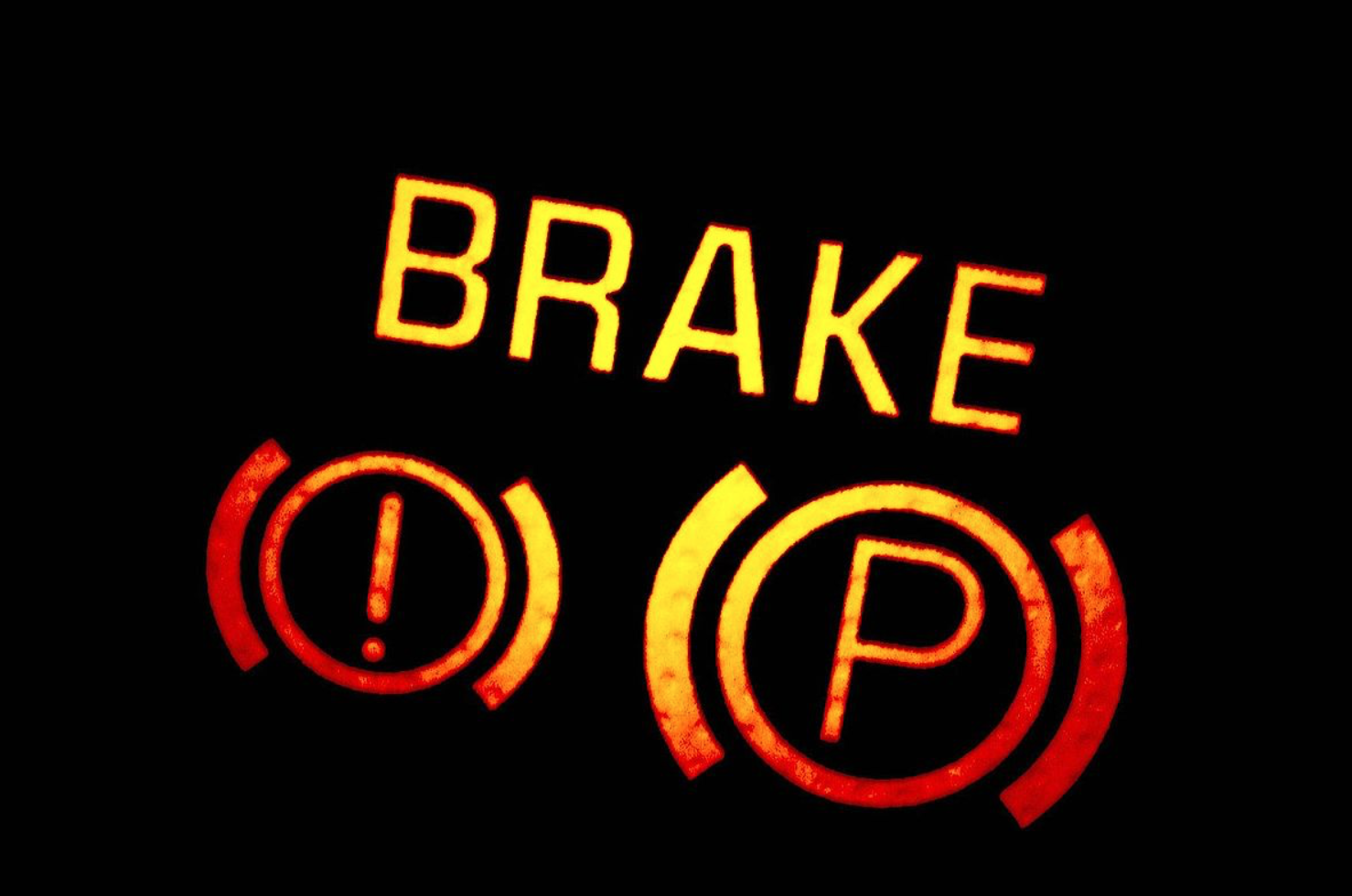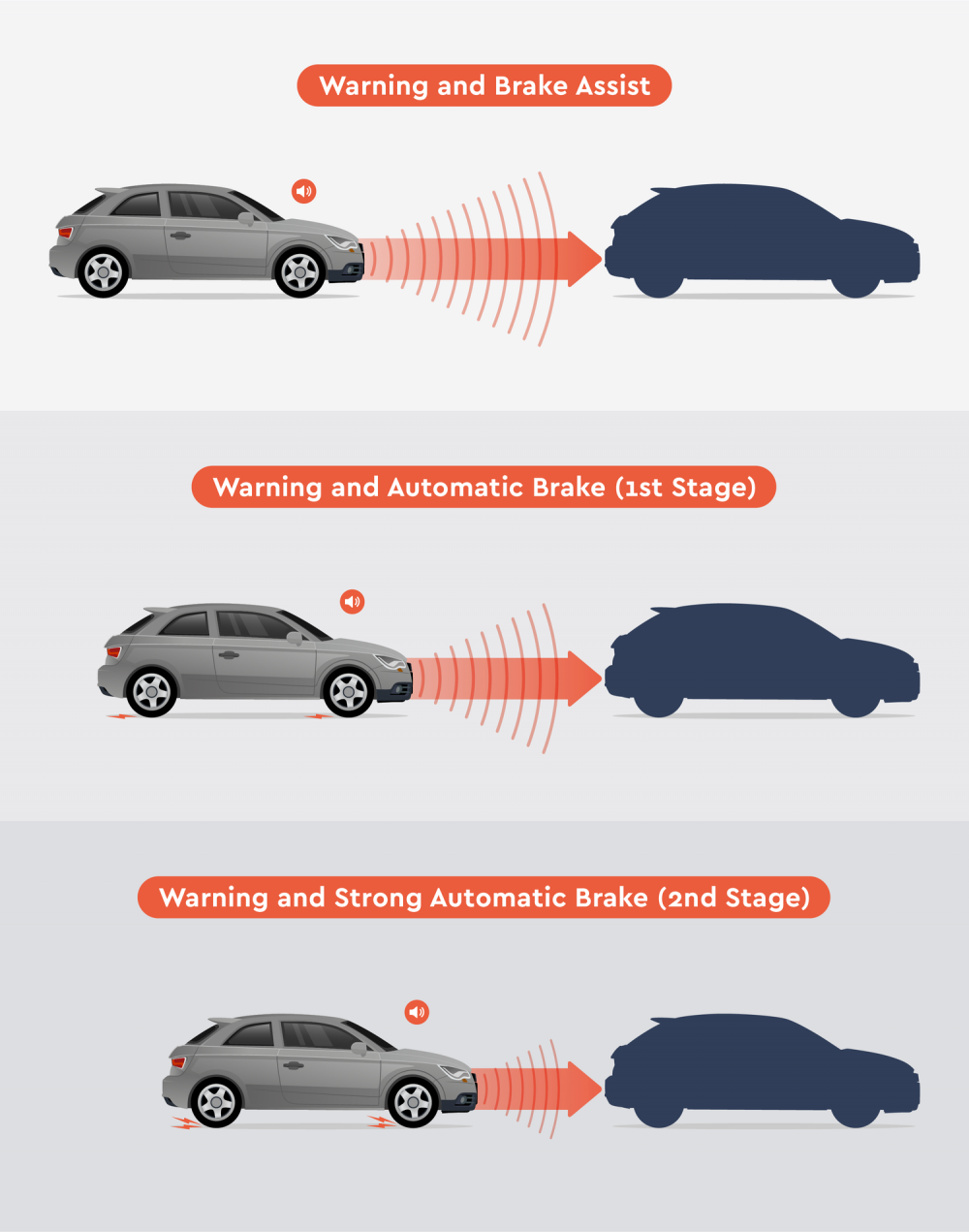Study: Automatic Emergency Braking Systems Fail At Deadliest Crash Speeds
7:13 AM EDT on September 29, 2022

Photo: Tony Webseter, CC
The automatic emergency braking systems that will soon come standard on nearly all new cars don't reliably prevent crashes at the higher speeds at which the overwhelming majority of roadway deaths occur, a new study finds — and pedestrian-specific braking systems need further scrutiny, too.
Researchers from the American Automobile Association put four major automakers' versions of the popular safety technology to the test, with a particular focus on the high-speed collision scenarios that are common on deadly U.S. roads, but uncommon in federal crash test labs.
At 30 miles per hour, all four of the cars — which were made by Chevrolet, Ford, Honda, and Toyota, respectively — were usually able to prevent rear-end collisions, with 17 out of 20 (85 percent) test runs avoiding a crash entirely. And in the three crashes that did occur, the vehicles were still able to slow themselves an average of 86 percent in the moments before impact, to a point when it'd be far less likely for someone to get hurt.
At 40 miles per hour, things got a little dicier. The cars were only able to avoid a rear collision about 30 percent of the time, though fortunately, average crash speeds were reduced substantially in the process.
Even at slower speeds, though, the Automatic Emergency Braking Systems didn't prevent any crashes when faced with other common collision scenarios, like a vehicle making a left turn in front of them, or crossing their path at a perpendicular (also known as a T-bone crash). All three scenarios are particularly common on wide, fast arterial roads running through countless U.S. communities, which are typically signed at 35 miles per hour or more but experience far-faster speeds.
The National Highway Traffic Safety Administration, which sets performance standards for vehicle technology, typically only evaluates the efficacy of automatic emergency braking systems at test speeds under 25 miles per hour, because it's long been believed that the tech will perform just as well at higher velocities, or that higher-speed crashes might cause vehicle sensors to dislodge and invalidate the tests. Groups like the Insurance Institute for Highway Safety, though, have questioned whether regulators can afford to make those assumptions, considering that groups like AAA say that 90 percent of traffic deaths happen on roads with speed limits over 40 miles per hour.
"We as an organization, as well as myself personally, are fully on board with the potential of this technology, as well as the current level of effectiveness in terms of what we’ve already seen in rear end crashes," said Matthew Lum, an automotive technical engineer for AAA. "We just want to ensure that this technology is eventually realized to its greatest potential."
Looks like you'll still have to pay attention while #driving: Study Finds Automatic Emergency Braking "Insufficient" at Normal Driving Speeds! https://t.co/fdEIT5APt7 #safety
— National Safe Driver Program (@trafficsafety4u) September 22, 2022
Unfortunately, that still seems to be a long ways off.
Automatic Emergency Braking Systems, or AEBS, have been around since way back in 2003, but have largely been sold to consumers as a pricey add-on, leaving researchers with little data about how well the tech handles real-world road conditions.

In 2016, though, a staggering 22 automakers representing 99 percent of the U.S. market voluntarily agreed to make the safety feature standard across all new models by the end of September 2022 — yes, this month — and on new trucks over 8,501 pounds by 2025. By the end of last year, 12 of them had already done it, and Consumer Reports says that 83 percent of model year 2022 cars have AEB on board.
Unfortunately, the pledge had a catch. Per NHTSA's rock-bottom standards, the AEB systems the automakers' sold only needed to achieve "a speed reduction of at least 10 miles per hour in either... 12 or 25 mile per hour tests, or a speed reduction of five miles per hour in both of the tests" — even though, as pretty much every street safety advocate knows, those ultra-slow speeds are incredibly uncommon on U.S. roads, and unlikely to injure someone even if a robo-car doesn't intervene.
Happily, AAA's tests found that the four cars did perform well at slightly higher speeds than that — at least when it came to crashes with other drivers.
But the researchers didn't test whether cars were able to reliably stop in the presence of walkers, since pedestrian automatic emergency braking systems (PAEBS) were notably excluded from the 2022 pledge that inspired the study.
Other studies have shown, though, that PAEBS make no difference at all at speeds over 50 miles her hour, on unlit roads after dark, or in inclement weather — and even when conditions are perfect, they still only cut collisions by about a third.
NHTSA has signaled that it is primarily investigating fallible technological solutions like PAEBS to fulfill a new mandate from Congress to include pedestrian safety in the New Cars Assessment Program, rather than exploring the possibility of regulating excessive vehicle size and weight, aggressive front-end design, and other factors that experts say are driving today's pedestrian death crisis.
To add insult to literal roadway injury, automakers tend to market PAEBS as a convenient way for drivers to avoid the inconvenience of striking obnoxious jaywalkers, irresponsible children and pedestrians with their heads in the clouds, rather than as a life-saving tool that can complement, but not replace, drivers' efforts to keep other road users safe.
With Automatic Emergency Braking systems already installed on most new cars, the AAA researchers say its critical that consumers learn about the limitations of today's technology, even as the industry works to improve it. That, ideally, would mean automakers would issue simple, accessible "quick-start" guides to advanced vehicle safety features and require dealers to instruct new car buyers to read them, rather than burying important safety advisories in the fine print of a lengthy owner's manual.
And they also say that automakers need to reframe how they sell automated technology more broadly: not as a cool new widget that can help you rock out to Queen hands-free behind the wheel, but as a safety backstop that can help, but can't always be relied upon, to save lives.
"The most common sense and easy to understand advice that we can give the general public is to simply pretend that your car doesn’t even have AEB," added Lum. "Of course it’s great to have as a last resort, but drivers shouldn’t use this technology as a crutch in any sort of way. ... They still need to be on alert for crashes at all times."
Kea Wilson is editor of Streetsblog USA. She has more than a dozen years experience as a writer telling emotional, urgent and actionable stories that motivate average Americans to get involved in making their cities better places. She is also a novelist, cyclist, and affordable housing advocate. She previously worked at Strong Towns, and currently lives in St. Louis, MO. Kea can be reached at kea@streetsblog.org or on Twitter @streetsblogkea. Please reach out to her with tips and submissions.
Read More:
Stay in touch
Sign up for our free newsletter
More from Streetsblog USA
Talking Headways Podcast: Money is a Lot of Different Things
It's Part II of our discussion with Jim Kumon!
If Thursday’s Headlines Build It, They Will Come
Why can the U.S. quickly rebuild a bridge for cars, but not do the same for transit? It comes down to political will and a reliance on consultants.
Wider Highways Don’t Solve Congestion. So Why Are We Still Knocking Down Homes for Them?
Highway expansion projects certainly qualify as projects for public use. But do they deliver a public benefit that justifies taking private property?
Kiss Wednesday’s Headlines on the Bus
Bus-only lanes result in faster service that saves transit agencies money and helps riders get to work faster.
Freeway Drivers Keep Slamming into Bridge Railing in L.A.’s Griffith Park
Drivers keep smashing the Riverside Drive Bridge railing - plus a few other Griffith Park bike/walk updates.




